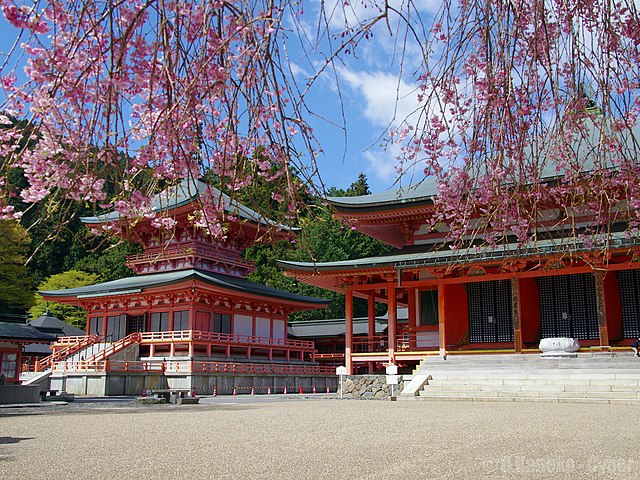Kūya was an itinerant Japanese Buddhist monk, or hijiri (聖), later ordained in the Tendai Buddhist sect, who was an early proselytizer of the practice of the nembutsu amongst the populace. Kūya's efforts helped promote the Pure Land teaching of Buddhism to the capital at a time when the movement was first gaining traction in Japan. For his efforts, Kūya earned the name ichi hijiri and Amida hijiri. Kūya was known for taking images with him on his travels and added musical rhythm and dance to his prayers, known as odori nembutsu. Like Gyōki, he is said to have performed works for the public benefit such as building roads and bridges, digging wells, and burying abandoned corpses.

Statue of Kūya by Kōshō, son of Unkei, at Rokuharamitsu-ji (六波羅蜜寺), Kyoto, dating to the first decade of the thirteenth century and an Important Cultural Property. The six Chinese characters of the nembutsu, 南無阿弥陀仏 (na-mu-a-mi-da-butsu), are represented by six small figures of Amida streaming from Kūya's mouth. He walks as if on a pilgrimage, holding a staff topped with an antler and striking a gong. Similar statues, all of the Kamakura period and Important Cultural Properties, may be found at
Tendai , also known as the Tendai Lotus School, is a Mahāyāna Buddhist tradition with significant esoteric elements that was officially established in Japan in 806 by the Japanese monk Saichō. The Tendai school, which has been based on Mount Hiei since its inception, rose to prominence during the Heian period (794–1185). It gradually eclipsed the powerful Hossō school and competed with the rival Shingon school to become the most influential sect at the Imperial court.
Enryaku-ji, the head temple of Tendai at Mount Hiei
Painting of Saichō, founder of the Tendai sect in Japan
Mount Hiei in Spring from Umahashi over the Takano river
A statue of Ennin, an important disciple of Saicho





